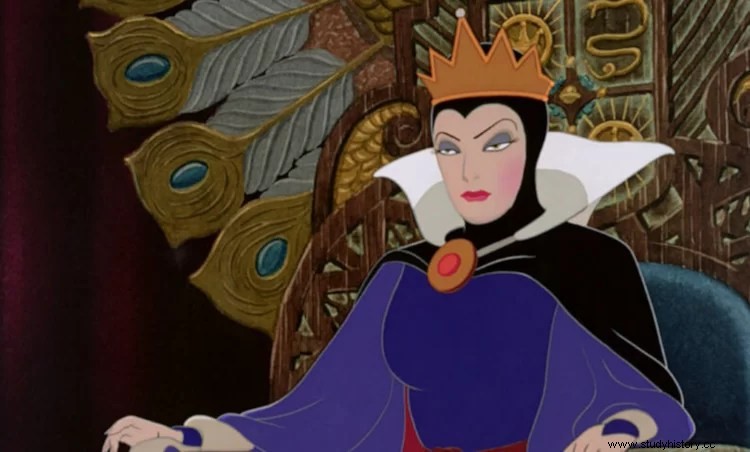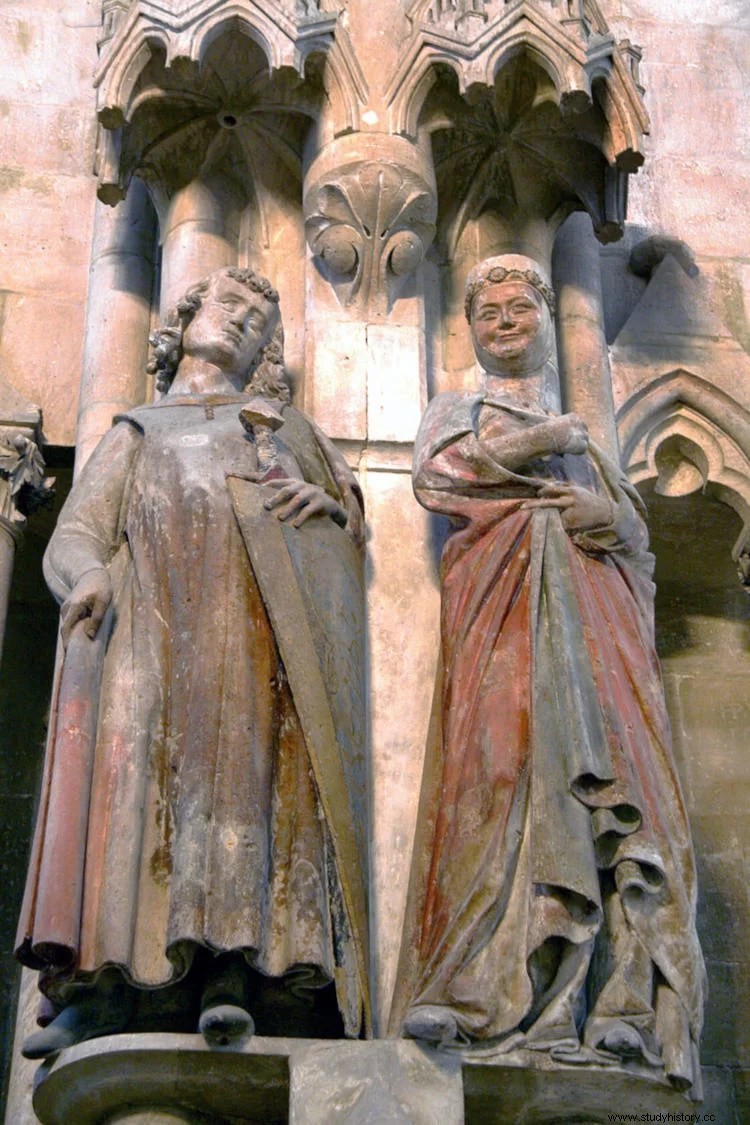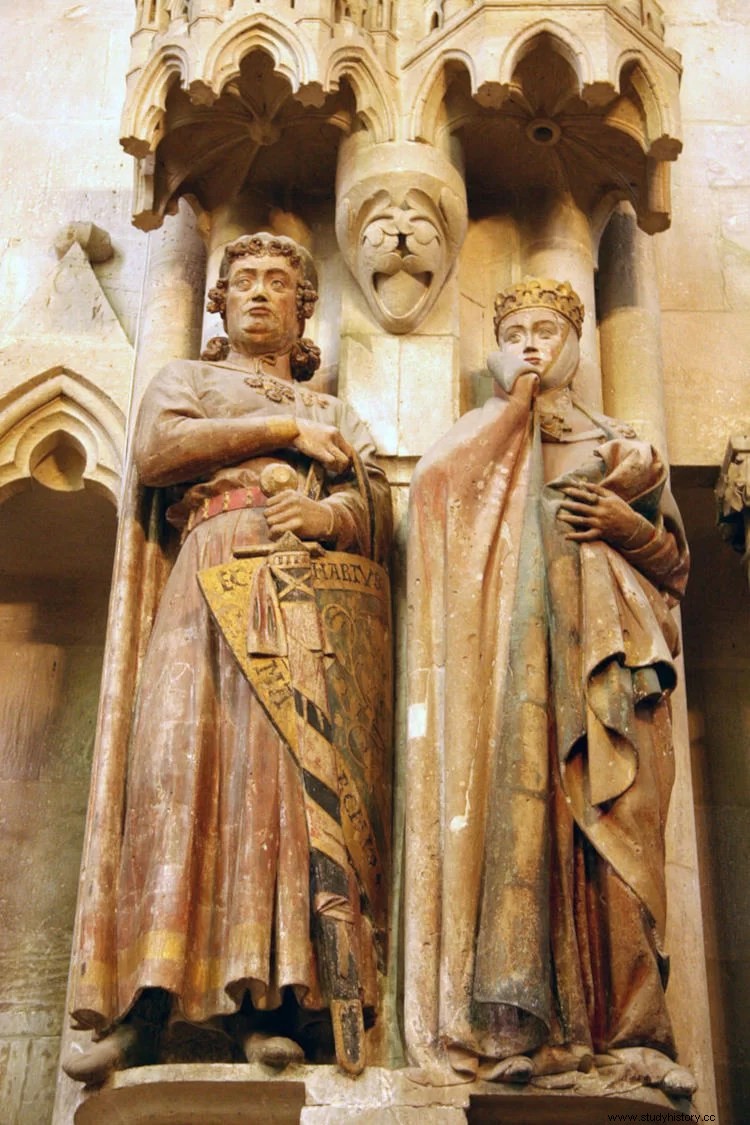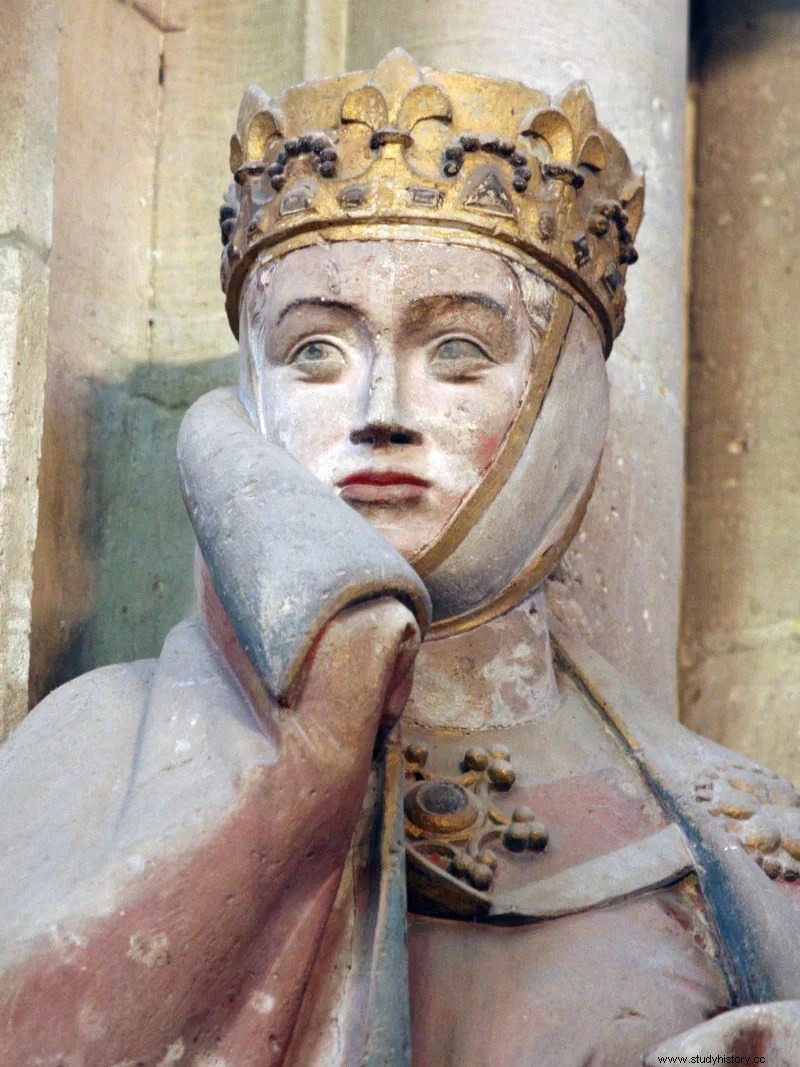It is impossible that there is someone who does not recognize this fragment, corresponding to one of the most famous tales of the Grimm brothers:Snow White . Walt Disney chose him in 1937 for what was his first feature film ( Snow White and the seven dwarfs , which was also the first sound and color in the history of cinema) and, as usual, took a real character as a model for the image of the evil and vain queen:a woman who lived in the eleventh century and whose sculptural portrait , preserved in Naumburg Cathedral, is considered one of the most significant of German Gothic. She was called Uta von Ballenstedt.
Uta was a native of Ballenstedt, a town in what is now the federal state of Saxony-Anhalt (Germany), where he was born around the year 1000. He belonged to the house of Ascania, a dynasty of ancient lineage that his brother Esico would initiate. being his father Count Adalbert of Ballenstedt and his mother Hidda, daughter of Margrave Hodo I of Lusatia (a bordering mark with Poland and Silesia). At least that is presumed, since the sources of the time do not reflect those relationships.

With so much blue blood running through her veins, she was inevitably headed for a marriage of convenience, as was the custom then to establish political alliances. According to the Naumburg chronicles, all two centuries later, in 1024 Uta was married to Ecardo II, younger brother of Germán I, Margrave of Meissen, a territory located on the eastern border of the Holy Roman Empire inherited after the murder of his father and the dismissal of his uncle (let's clarify that margrave is the Castilianization of markgraf , the Teutonic equivalent of marquis).
Germán had a wife named Regelinda, who died in 1014 without issue and who, by the way, also has her statue in Naumburg Cathedral next to her husband.

In the year 1038, on the death of Germán and in the absence of a son, the Meissen margraviate passed into the hands of Ecardo, who thus added it to that of Lusatia, which he had obtained four years earlier after getting rid of his brother-in-law Theoderic II ( husband of his sister Matilde) and which extended through present-day Lower Lusatia (approximately from the south-west of the state of Brandenburg to the south-west of the Polish Lubusz voivodeship), adjoining Meissen.
Ecardo was able to benefit so much thanks to his loyalty to Enrique III el Negro (or the Pious ), King of the Romans who in 1046 would manage to seize the crown of the Holy Roman Empire, succeeding his father Conrad II.

In this way, Ecardo became the guardian of the German borders with Poland and Bohemia, following the monarch against Duke Bretislao I and his ally, the Hungarian King Pedro Orseolo, to stop the raids that they used to carry out in their domains. A first campaign failed but the second was victorious and they were forced to sign peace.
None of this had repercussions on his conjugal life with Uta, which, however, also ended without being able to produce an heir, which is why his lineage would become extinct. In fact, in 1046 a serious epidemic ended her life, so her husband donated half of the dowry received to Empress Inés de Pitou, wife of Henry III, and the other half to the convent of San Ciriaco de Gernrode (of which its splendid Ottonian-style church still stands today) because the abbess was, from 1044, Uta's sister Hazecha.
The donation was not inconsiderable, as it included properties in Gundersleve, Westerhausen, Wendhusen, Wegeleben, Mordorf, Richbrechtigerode and Gernrode itself.
But the disease not only killed Uta but also Ecardo -just a few months later- and it was Henry III who kept the rest of his possessions, passing them on to the Thuringian Count William IV of Weimar.
Therefore, there was no descendant who bore the surname, but the memory of both survived thanks to Naumburg Cathedral, a 13th-century building that is protected as a World Heritage Site by UNESCO and of which they were co-founders, so who were immortalized in the Stifterfiguren , that is, figures of donors, who represent the twelve characters who collaborated in the foundation of the temple.

There are a dozen polychrome sandstone statues that decorate the western apse, which is separated from the rest by a high choir. They were made in the 13th century, in the Gothic style, by the so-called Naumburger Meiste r (Master of Naumburg), representing eight men and four women; seven of them are not directly related to this article and are Count Dietmar; Timo von Kistric; Count William von Camburg and his wife Gepa (perhaps Adelaide I); Count Sizzo von Schwarzburg-Kevernburg; Count Dietrich von Brehna and Gerburg, his wife. But the rest do:Conrado, nephew of Ecardo and Germán; German I and Regelinda; and lastly, Ecardo and Uta.
The figure of the latter was made between 1243 and 1249, characterized by its realism:the margrave's wife was captured young and beautiful, with an atypical crown of fleurs-de-lis encrusted with precious stones and pearls, the gebende (a linen headdress that wrapped the head of married women), a red surcoat and a fur-lined mantle of the same color -although with a darker tone-, which she fastens with a golden brooch and with which she adopts a gesture half cloaked. An outfit that bears an undoubted resemblance to the one Walt Disney would put on the stepmother in Snow White and the Seven Dwarfs .

All the statues are highly original and natural (Regelinda's is famous for her smile), but Uta's was especially charismatic, to the point that she is usually the only one known by her name and is photographed individually. Furthermore, the Nazis considered her a prototype of Aryan beauty, in the same way that the Horseman of Bamberg (an equestrian statue of the homonymous cathedral) was chosen for men, so many homes used to have scale reproductions of both. plays.
Likewise, it was considered an example of classical art that had to oppose the degenerate of the avant-garde. That is why Goebbels considered it an outrage that Hollywood borrowed that iconography for the film and prohibited its distribution in Germany.
Umberto Eco was also upset but for other, more aesthetic reasons. In a 2008 article he recalled a rumor that it was a 1930s actress, Helen Gahagan, who inspired Disney (although there is also talk of a combination of traits from Joan Crawford, Katharine Hepburn and Gale Sondergaard). To top it off, the Italian writer declared in an interview: «If I were asked which woman from the History of Art I would go to dinner with, that would be Uta of Naumburg» . He also quoted the Lady with an Ermine by Leonardo da Vinci, but that's beside the point.
